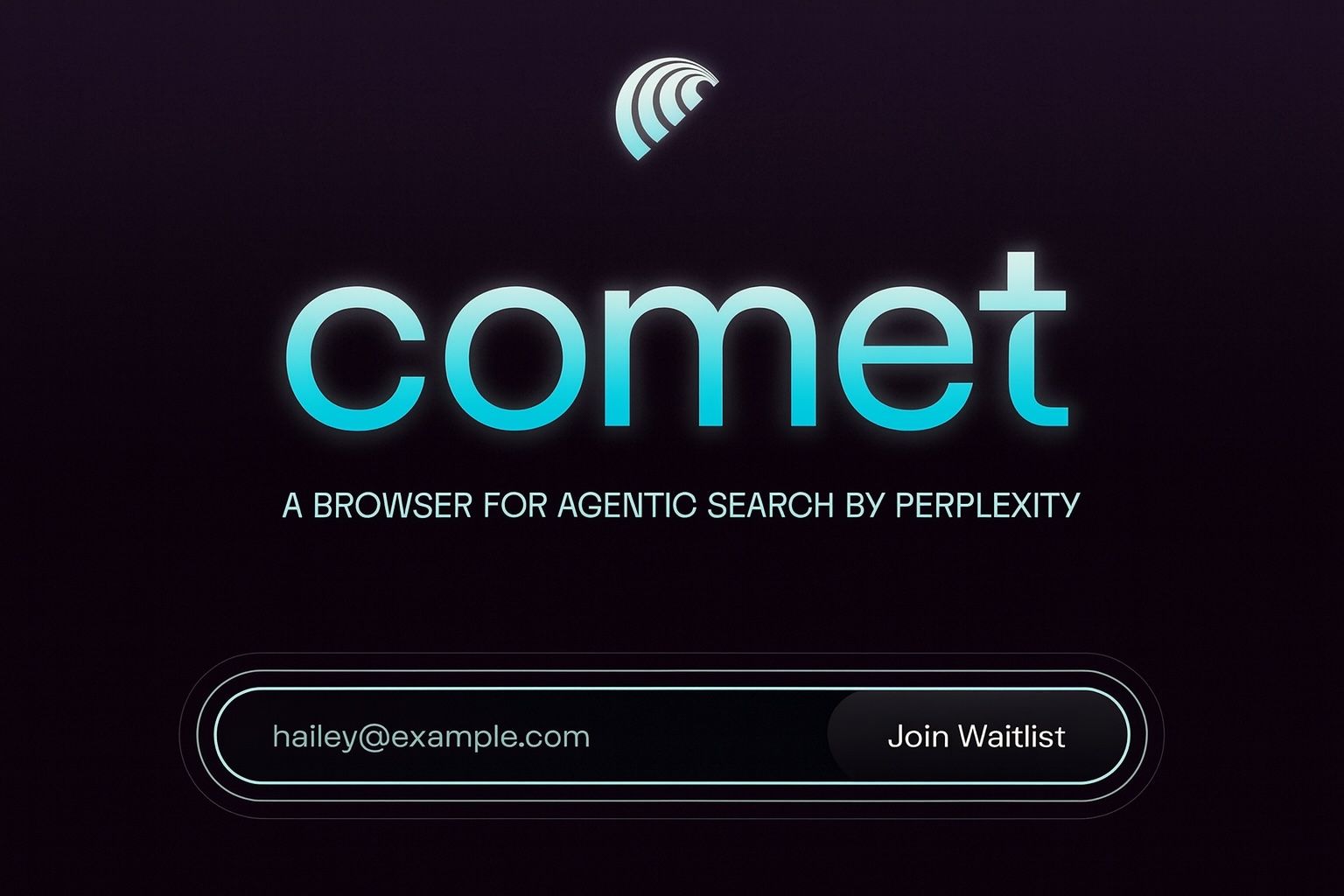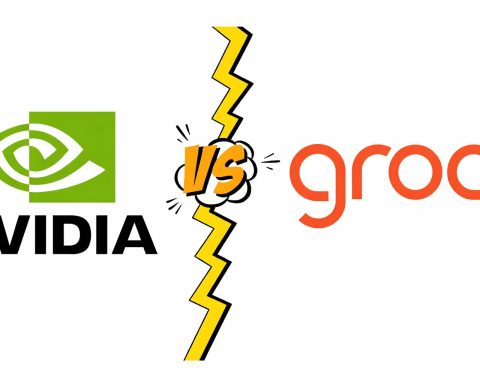- Free from $200: Perplexity has made Comet – its AI-powered web browser – available to everyone at no charge [1] [2]. The company says the move is permanent. (Previously Comet was limited to the $200/month “Max” plan.)
- Personal AI assistant: Comet embeds Perplexity’s AI at every step. An always-on sidebar assistant follows you on the web, answers questions about pages, summarizes content and even carries out multi-step tasks across sites [3] [4]. For example, it can compare products while shopping, gather travel info, or draft and sort emails – all without leaving the browser.
- Premium upgrades: The free tier comes with usage limits [5], but paying users unlock extra features. Perplexity’s Pro and Max subscribers get access to high-end AI models and a powerful “Background Assistant” that can run multiple tasks simultaneously (e.g. finding flights, booking tickets, drafting messages) in the background [6].
- Curated news (Comet Plus): Alongside the browser, Perplexity launched Comet Plus in August – a $5/mo service (free for Pro/Max users) that delivers AI-curated content from top publishers [7] [8]. Launch partners include CNN, The Washington Post, Fortune, Condé Nast titles (The New Yorker, Wired, Vogue), Le Monde, and others [9] [10]. Comet Plus is pitched as a way to get “trusted” news inside the browser.
- Fighting “AI slop”: Perplexity says it built Comet to address the “broken” state of the internet. CEO Aravind Srinivas calls out the flood of low-quality AI content – dubbed “slop” – and says the company wants “a better internet…accessible to everybody” [11]. Perplexity’s CBO Dmitry Shevelenko adds that “people are tired of…slop” and that Comet offers a cleaner alternative, asserting “the internet is better on Comet” [12].
Comet Browser Goes Free for Everyone
Perplexity first unveiled Comet in July 2025 as a paid add-on for its Perplexity Max users (a $200/month tier) [13]. Demand was strong: the company says millions joined the waiting list for access. Now the company has removed the paywall completely. On October 2, Perplexity announced on social media that “Comet is now generally available to download for everyone (free, Pro and Max users)!” [14]. The launch message was frank: “The internet is better on Comet” [15]. In remarks reported by Business Insider, Srinivas explained that Perplexity wants to “build a better internet…that needs to be accessible to everybody” [16].
Comet is a Chromium-based browser, meaning it looks and feels much like Chrome. It can import your Chrome bookmarks, passwords and extensions [17] [18]. But under the hood, Comet puts AI front-and-center. Its default new-tab page is a chat interface, and its key feature is an AI sidebar assistant. You open the sidebar (or press Alt+A) on any webpage and the Comet Assistant can read the page’s content and respond. It will “break down articles, explain complex ideas, and even interpret images,” as Perplexity puts it [19]. For example, while reading a news story you can ask Comet to summarize it, clarify terms, or pull in related facts from other sources. In effect, Comet’s assistant “travels the web with” you, surfing sites and answering questions, rather than merely tacking AI onto a normal browser [20] [21].
AI-Powered Features and Automation
Comet’s AI sidebar is tightly integrated. It not only parses text, it can also act on your behalf. It can draft emails, arrange meetings, fill out purchase forms, or compare prices across sites without manual searching [22] [23]. For instance, one demo shows the assistant adding concert tickets to a cart and finding the cheapest flights for given dates – all in the background while the user does other work. These multi-step tasks run through a “mission control” dashboard so you can review progress and intervene if needed [24]. Paid “Max” subscribers get access to the Background Assistant feature, described as “a team of assistants working for you” that handles many tasks simultaneously [25].
Other built-in tools help streamline browsing and research. Comet offers Search with Source – it uses Perplexity’s AI search engine to fetch answers with links to original articles [26] [27]. It also includes vertical apps for Shopping (find deals), Travel (destinations/flights), Finance (budget tracking), and Sports (scores/news) [28]. You can organize your work into “spaces” (tab and task groups) to keep different projects separate. A single-click summary button (Alt+S) condenses long articles or transcripts into key points [29]. In short, Comet blends features of a browser, search engine and personal assistant into one interface.
Curated News via Comet Plus
Simultaneously with making Comet free, Perplexity detailed its Comet Plus plan, an optional news subscription. Comet Plus aggregates articles from established publishers, all accessible directly in the browser. Perplexity says this is designed as an “AI-enhanced alternative” to services like Apple News Plus [30] [31]. At launch, the partners include The Washington Post, CNN, Conde Nast (The New Yorker, Wired, Vogue), Fortune, Le Monde and others [32]. Users on the Pro or Max plans get Comet Plus included at no extra cost; all other users can add it for $5/month [33] [34]. (Contrary to some early reports, Comet Plus is not free – it is paid for outside the Pro/Max bundles.) This news tie-up reflects Perplexity’s emphasis on high-quality, licensed content. In fact, Perplexity already shares revenue with publishers like CNN, Condé Nast, The Post and Le Monde for its search answers [35], and now these outlets are front-and-center in Comet’s offerings.
Battling “AI Slop” and Chrome’s Dominance
A key theme in Perplexity’s messaging is tackling the “broken” web – in particular, the influx of meaningless AI-generated content (sometimes called “AI slop”). Srinivas and other leaders argue that many modern internet experiences push users quickly from page to page to checkout, stifling curiosity [36] [37]. In contrast, they say Comet encourages exploration. Early data (from Perplexity) suggests people who tried Comet asked 6 to 18 times more questions on day one than before [38]. As CBO Dmitry Shevelenko puts it, “people are tired of being part of someone else’s funnel and tired of slop,” and “we know the internet is better on Comet” [39]. CEO Srinivas echoed this: “slop is fundamentally going to be easier to create now, and it’s going to be hard to distinguish if something is AI or human on the internet,” so he wants Comet to prioritize credible info [40].
Perplexity is also explicitly positioning Comet against Google’s browser. Google Chrome still dominates – about 73.7%of desktop browser usage worldwide [41] (roughly 3 billion users [42]). Perplexity has even publicly taunted the incumbent: on X the CEO cheekily tagged Chrome’s account with “O hey hi @googlechrome” when announcing Comet’s free rollout [43]. Unlike Chrome (which has only recently added some AI features like Gemini), Comet was built from the ground up with AI. Perplexity notes that users of AI search often get more succinct, source-linked answers instead of wading through clickbait. In this vein, Comet’s AI sidekick draws from trusted sources and the integrated news partners to avoid the “quick answers and AI slop” that can plague other tools [44] [45].
Perplexity isn’t the only browser chasing AI. The tech world is bristling with AI-browser projects. Google has started adding Gemini AI features into Chrome [46], Microsoft’s Edge has Copilot Mode, and the startup behind Arc browser is rolling out its AI (Project Dia). Opera launched a new “Neon” AI browser with its own subscription. OpenAI is also rumored to be working on a web browser. In this crowded field, Perplexity hopes its free, AI-driven approach will win converts. As one tech columnist notes, by making Comet free, “Perplexity clearly hopes to capture people’s browsing time, not just search queries” [47] – essentially trying to become the default way users navigate the web.
Looking Ahead: Mobile, Adoption and Impact
For now Comet is available on Windows and Mac (with extensions support) [48] [49]. Perplexity says a mobile version is imminent, promising voice controls and an interface optimized for phones [50] [51]. It remains to be seen how many people will switch. Tech reviewer Eric Hal Schwartz warns that AI browsers are still a new experiment. “Whether making Comet free will make it popular remains an open question,” he writes [52]. If Comet can deliver reliable help and productivity gains, however, Perplexity might hook users who find Chrome’s AI additions too piecemeal.
In sum, the free Comet launch is a bold play in the evolving browser wars. Perplexity hopes that by combining search, shopping, news and tasks into one AI companion, it can carve out real usage. For users tired of clicking through the internet, the promise is alluring: an assistant that does much of the work. As the company’s mantra says, “the internet is better on Comet” [53] – a challenge to legacy browsers and to the flood of junk online.
Sources: Authoritative tech news outlets and Perplexity statements [54] [55] [56] [57] [58]. Notable quotations are from company executives and analysts cited above.
References
1. techcrunch.com, 2. www.tomsguide.com, 3. techcrunch.com, 4. www.tomsguide.com, 5. www.businessinsider.com, 6. techcrunch.com, 7. www.theverge.com, 8. www.theverge.com, 9. www.livemint.com, 10. www.theverge.com, 11. www.entrepreneur.com, 12. technologymagazine.com, 13. techcrunch.com, 14. www.livemint.com, 15. www.tomsguide.com, 16. www.entrepreneur.com, 17. www.tomsguide.com, 18. timesofindia.indiatimes.com, 19. www.livemint.com, 20. www.theverge.com, 21. www.livemint.com, 22. www.livemint.com, 23. www.tomsguide.com, 24. techcrunch.com, 25. techcrunch.com, 26. technologymagazine.com, 27. www.entrepreneur.com, 28. techcrunch.com, 29. www.livemint.com, 30. www.theverge.com, 31. www.livemint.com, 32. www.livemint.com, 33. www.theverge.com, 34. www.livemint.com, 35. afrotech.com, 36. technologymagazine.com, 37. technologymagazine.com, 38. technologymagazine.com, 39. technologymagazine.com, 40. www.entrepreneur.com, 41. www.emarketer.com, 42. www.emarketer.com, 43. www.livemint.com, 44. technologymagazine.com, 45. technologymagazine.com, 46. www.theverge.com, 47. www.techradar.com, 48. timesofindia.indiatimes.com, 49. www.tomsguide.com, 50. technologymagazine.com, 51. timesofindia.indiatimes.com, 52. www.techradar.com, 53. www.tomsguide.com, 54. techcrunch.com, 55. www.businessinsider.com, 56. www.theverge.com, 57. technologymagazine.com, 58. www.techradar.com










